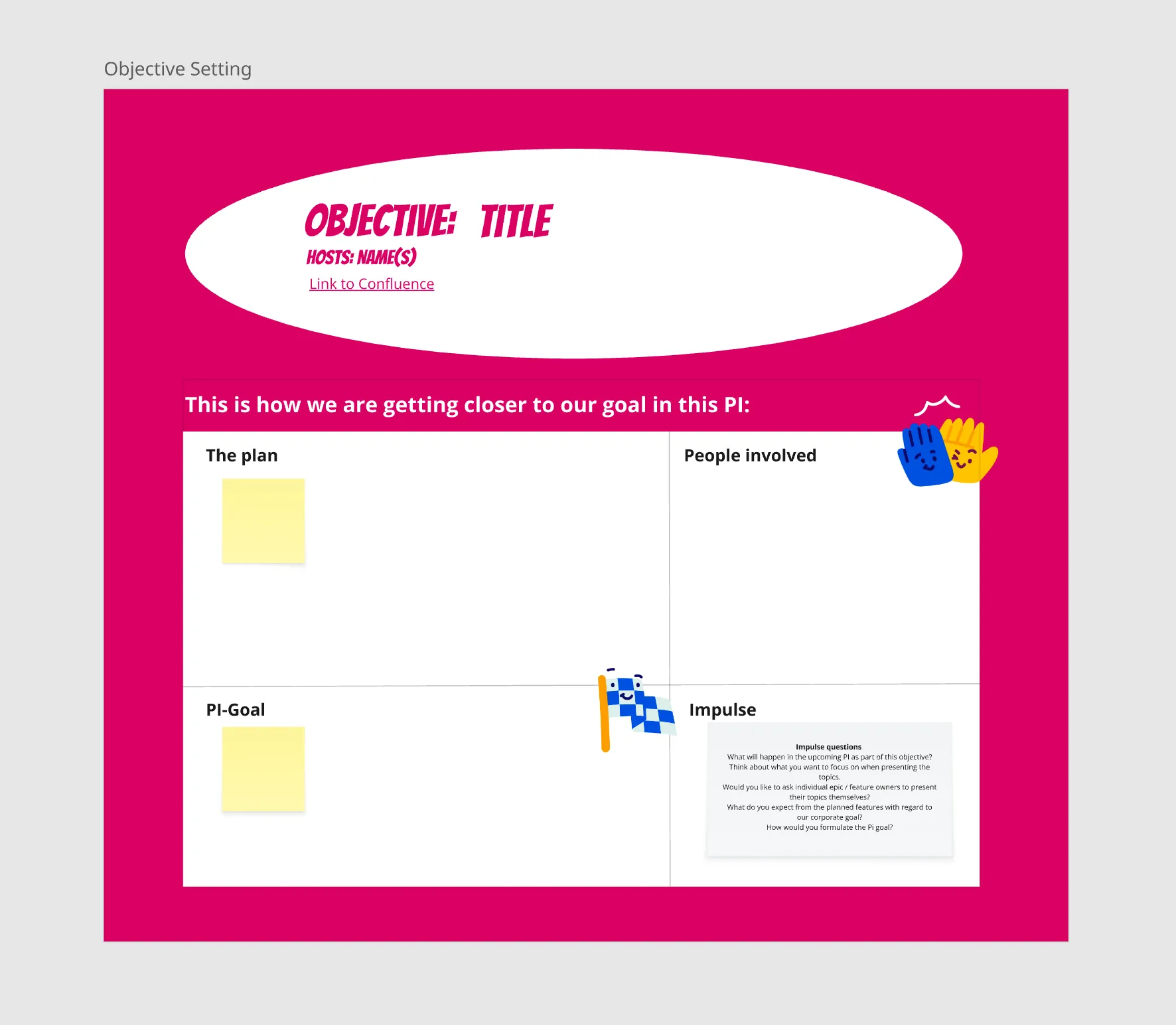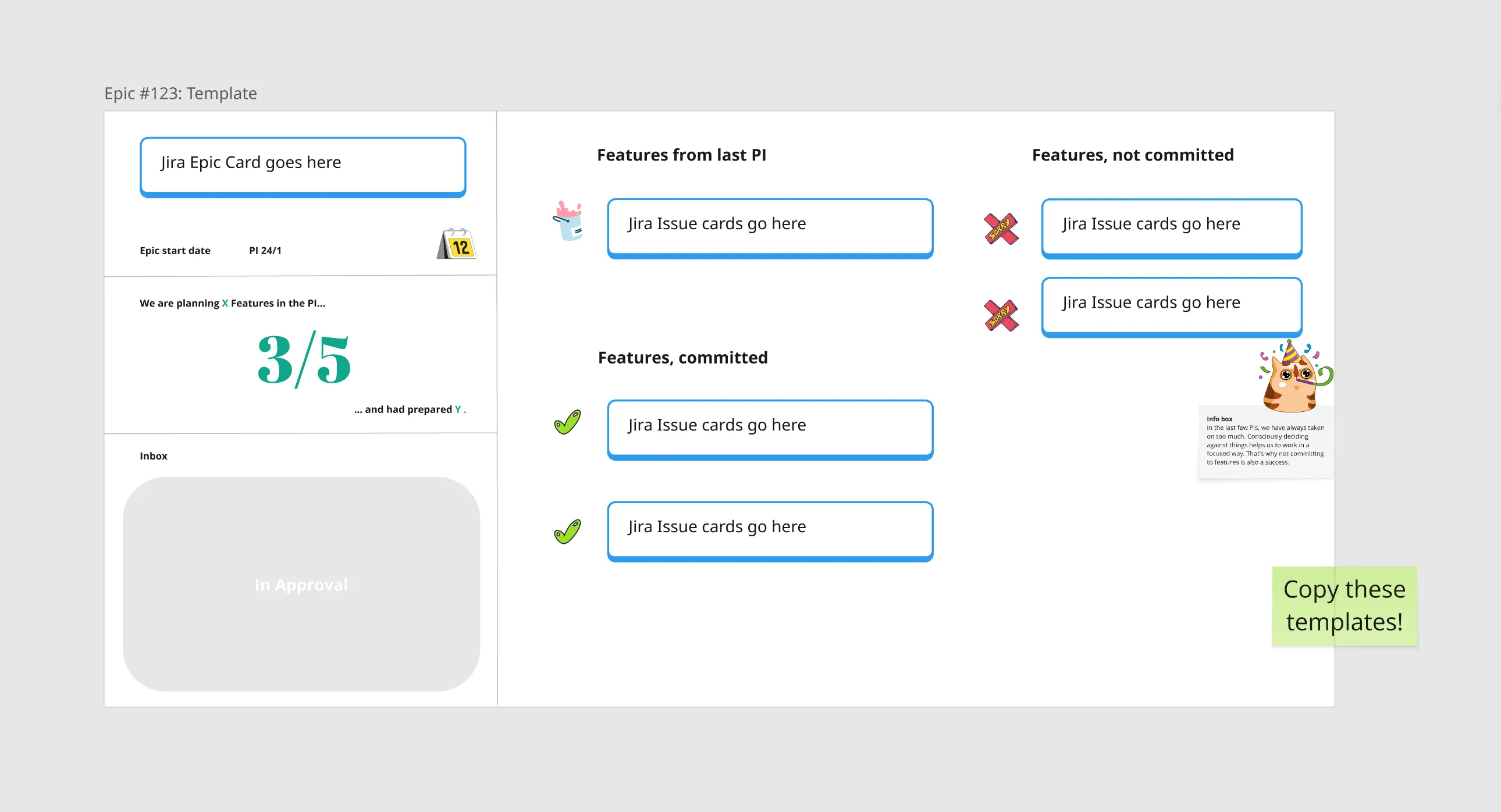Do your teams feel disconnected from your company’s core mission? You’re not alone. A recent study of Fortune 500 leaders found that 76% believe their teams are NOT doing mission-critical work.
At Seibert, we felt that pain. After a period of rapid growth in 2023—expanding our headcount by over 50%—we struggled with unclear direction and disconnected teams. It’s the classic growth challenge: how do you keep everyone moving in the same direction when you have over 500 employees across internationally dispersed, autonomous teams?
We found a solution.
We developed a new agile strategy process to create and maintain high alignment and autonomy. While our Atlassian stack (like Confluence and Jira) is the backbone of our work, Miro has become the central, visual hub for our quarterly agile planning.
In this post, I’m breaking down the 4-step process we use to keep our teams aligned, focused, and autonomous.
Our 4-Step Agile Planning Process
Our system is built on a cycle of strategic goal-setting, collaborative planning, focused execution, and continuous feedback. Here’s how it works.
Step 1: Setting the Stage in Confluence
True alignment starts with a clear “why.” Our strategy group develops company-wide goals that cover a three- to five-year period. These strategic goals are:
-
Formatted as OKRs (Objectives and Key Results).
-
Documented in Confluence for complete, company-wide visibility.
These high-level goals are purposefully broad. We don’t follow a rigid, top-down hierarchy. Instead, Seibert is structured in autonomous teams. The Confluence OKRs provide the “North Star,” allowing individual business units and teams to set their own objectives in alignment with the overarching strategy.

Step 2: Collaborative PI Planning in Miro
This is where the magic happens. Every three to four months, we hold a PI (Program Increment) planning session. This is our chance for all teams to come together, prioritize work, and commit to features that directly contribute to the company goals documented in Confluence.
This is where Miro becomes our central nervous system.
Here’s our PI planning agenda:
Day 1 (In-person):
- Pitches: Teams pitch pre-prepared topics for cross-team collaboration. We use a central Miro board to visualize, categorize, and manage all these potential features—which average around 90 pitches per PI!

-
Breakouts: Interested colleagues join breakout rooms to discuss and refine the pitches. Linked Miro boards for each breakout allow ideas to be captured visually.
-
Prioritization: The main Miro board gives us a powerful overview of all 90+ features, helping us spot dependencies and prioritize the cross-team topics that need the most coordination. (Internal team planning happens separately).
One-Week Decision Window:
After the initial planning day, teams have one week to discuss internally, assess their capacity, and formally commit (or not commit) to the features they’ll take on.
Day 2 (Remote, 1-2 hours):
Feature owners present their teams’ commitments, often by walking through the finalized Miro board, which now reflects our collective plan for the quarter.
After this, any business unit that requests additional guidance can schedule a follow-up strategy workshop.
Step 3: Tracking Execution in Jira
Once a feature is planned and committed in Miro, it’s time to move to execution.
We use Jira to track all “strategy epics” and their associated committed features. Each feature is assigned an owner (typically the lead of the executing team). From there, it’s up to our autonomous teams to follow through and deliver. The Miro board provides the “what” and “why,” while Jira tracks the “how” and “when.”
Step 4: The Retrospective and Feedback Loop
This process is agile, not rigid. If any features remain unfinished by the next PI planning session, teams assess the remaining work and plan how to address it in future sprints.
Most importantly, we gather feedback to constantly improve the process itself:
-
Confidence Rating: We take a quick poll during planning to gauge how teams feel about their commitments.
-
Post-PI Survey: A formal survey helps us gather detailed feedback to refine our approach for the next interval.
One major outcome from our latest PI retrospective was a positive trend: we now have more feature owners, with fewer features per owner. This is a clear sign that our teams are narrowing their focus, improving execution, and avoiding the trap of being spread too thin.

The Results: Alignment and Autonomy at Scale
By implementing this process, we’ve successfully navigated a 50% growth in headcount without losing our strategic focus.
-
Transparency is high: Everyone can see the company goals in Confluence, the quarterly plan in Miro, and the work-in-progress in Jira.
-
Teams are focused: The PI planning process ensures teams commit to work that is directly aligned with company goals.
-
Employees are engaged: Team members feel a stronger sense of purpose, knowing exactly how their daily work contributes to meaningful progress.
While tools like Miro, Jira, and Confluence are essential to our workflow, it’s the process itself that drives the results. The right tools simply help us move faster, communicate better, and stay accountable. Alignment starts with a clear plan and company-wide buy-in.
See Our Miro Templates in Action
If you’re wondering exactly how we set up our Miro boards to manage 90+ feature pitches and keep hundreds of colleagues aligned, you’re in luck. We’re sharing a copy of our agile planning templates.
Get your own copy of our Agile Planning Miro Templates here.
And if you’re looking to better integrate your entire Atlassian stack (Jira, Confluence, and more) with powerful visualization tools like Miro, visit our Miro page to learn more. We can help you build an integrated agile workflow for your growing team.

